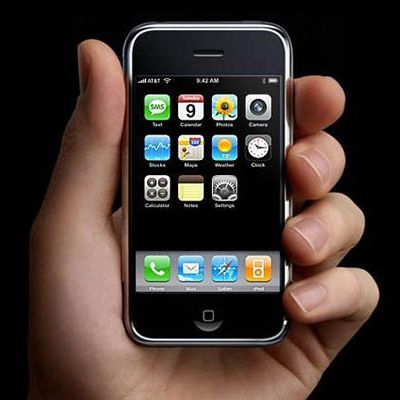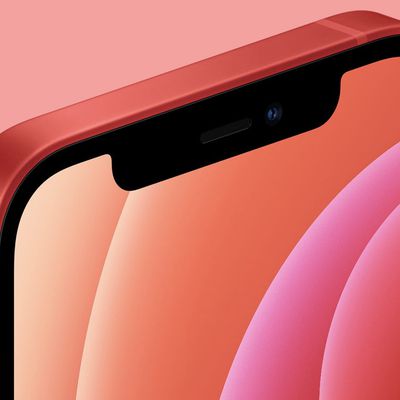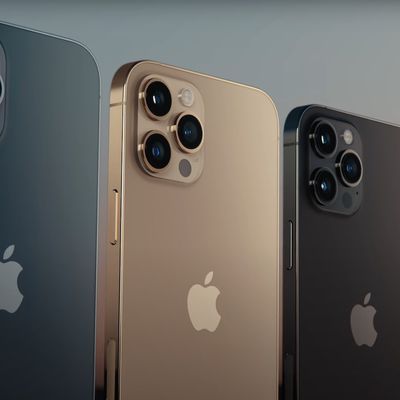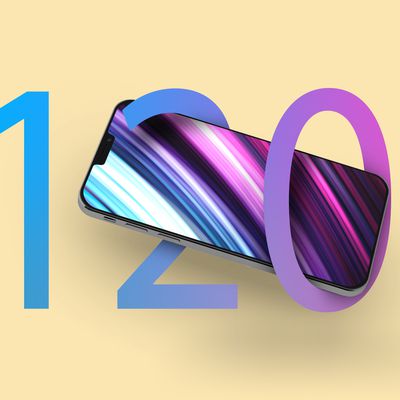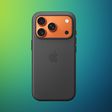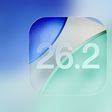In 2007, Apple launched the original iPhone, kickstarting the modern smartphone era which is now dominated by iPhone and Android devices. We've had 19 generations of iPhones so far, with the latest models, the iPhone 17, iPhone 17 Pro, iPhone 17 Pro Max, and iPhone Air, introduced in September 2025. Apple follows an annual update cycle, introducing new flagship models while discounting prior-year models and selling them at more affordable price points.

iPhone vs Android
Over the years, Android and iPhone smartphones have evolved to the point where feature-wise, they're similar in function and capability. Android smartphones are made by multiple manufacturers, but the core operating system is provided by Google, which leads to a wider variety of phones and price points to choose from, but weaker integration between software and hardware.
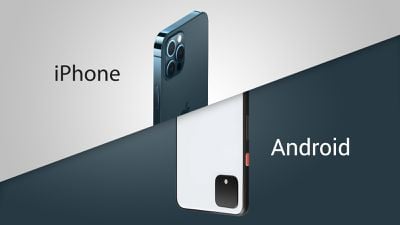
Apple's control of both the iPhone and the operating system (iOS) provides a more consistent experience along with ongoing support. With iOS 26, Apple supports all iPhones that were introduced in the last four years, so the majority of active iPhone owners can and do upgrade to the newest version of iOS that Apple rolls out each year.
Android updates are often more inconsistent and often don't make it to all Android-based smartphones because each manufacturer has to implement support on an individual basis. Google also does yearly Android updates, but the reality is that a lot of older Android smartphones don't get the new software.
With Apple's control and curation of the iPhone experience, the iPhone is largely considered to be the more secure platform, and Apple has made it a point to focus heavily on privacy. Apple's iOS is less customizable than Android, so for individuals who prefer flexibility and customization options, the Android operating system may be worth looking at.
How Do iPhone Updates Work?
Here are the basics you should know about how Apple updates the iPhone and the iOS operating system.
Each fall, typically in September, Apple releases a new series of flagship smartphones. These often come at high prices and feature the latest technologies, with Apple offering high-end models and still high-end but more affordable models. Prior-year iPhones often stick around with lower price points as cheaper alternatives to the latest and greatest technology, and occasionally, Apple launches a lower-cost iPhone outside of the normal fall timeline.
At the current time, Apple's iPhone lineup includes the iPhone 16e (2025), iPhone 16 (2024), iPhone 16 Plus (2024), iPhone 17 (2025), iPhone 17 Pro (2025), iPhone 17 Pro Max (2025), and iPhone Air (2025).
Apple also debuts an updated version of iOS at the same time that new iPhones launch, but new versions of iOS are pre-introduced every year at Apple's annual Worldwide Developers Conference to give developers time to incorporate new features and technologies into their apps ahead of when the software becomes available to the public. The current iPhones run iOS 26.
In this guide, we go over all of the iPhones that are in the current Apple lineup, offer up some buying suggestions, and provide tips and resources for both new and existing iPhone owners.
iPhone 17 Pro and iPhone 17 Pro Max ($1,099+)

The iPhone 17 Pro and iPhone 17 Pro Max are Apple's current high-end flagship devices with all of the top-of-the-line features and the most bells and whistles. The Pro models are for those who want to get the most out of their iPhones with the latest feature set.
Pricing on the iPhone 17 Pro starts at $1,099, while pricing on the iPhone 17 Pro Max starts at $1,199. The two iPhones are nearly identical when it comes to feature set, and it's only display size and battery capacity that set the two devices apart.
The iPhone 17 Pro Max has a larger 6.9-inch display, while the iPhone 17 Pro has a 6.3-inch display. Apple transitioned from titanium to aluminum this year, because it's a material with better thermal conductivity. Both iPhone 17 Pro models have a unibody aluminum frame, Ceramic Shield 2 front glass that's more durable than before, and a Ceramic Shield cutout at the back for MagSafe charging. Colors this year include Cosmic Orange, Deep Blue, and Silver.
The iPhone 17 Pro and Pro Max feature edge-to-edge OLED displays with slim bezels. A pill-shaped Dynamic Island continues to house the front-facing camera and hardware used for Face ID authentication, and it is integrated into the iPhone so it can show notifications and Live Activities. There is a customizable Action button on the left side, and a Camera Control for activating the Camera app on the right.
Apple introduced a new A19 Pro chip in the iPhone 17 Pro and Pro Max with a 6-core CPU, a 6-core GPU with neural accelerators, a 16-core Neural Engine, and 12GB RAM. It is faster and more efficient than the A18 Pro in the prior-generation models, plus the iPhone 17 Pro models are less likely to overheat and cause processor throttling because of a new vapor chamber cooling system.
Apple redesigned the camera bump, and it's now a camera "plateau" that takes up most of the top rear of the iPhone. It houses some iPhone components, providing Apple with more space for a larger battery. There continues to be a three-lens camera setup with a 48-megapixel Fusion camera, a 48-megapixel Ultra Wide camera that also supports Macro shots, and a new 48-megapixel Telephoto lens with 4× and 8× optical zoom options. There are also pro photo and video features like ProRes RAW recording, Log 2 recording, and genlock support.
Crash Detection is able to determine if you've been in a serious car accident, alerting emergency services, and there's also an Emergency SOS via satellite feature for getting help if you're out of range of Wi-Fi and cellular. Satellite connectivity can be used to send text messages and update your location, too. Apple designed a new N1 networking chip for the iPhone 17 Pro models, and it supports Wi-Fi 7 and Bluetooth 6.
Both iPhone 17 Pro models offer significant improvements to battery life, lasting up to six hours longer than prior-generation models. They are equipped with a USB-C port and support up to 25W MagSafe and Qi 2.2 charging.
Other features include IP68 water resistance, ProMotion 120Hz refresh rate for the display, faster 5G, better scratch and drop resistance, an upgraded 18-megapixel front-facing camera, and faster USB-C charging with USB 3 transfer speeds.
Key Features:
- Highest end, highest price
- Triple-lens camera: Main (Wide), Ultra Wide, and Telephoto
- 48-megapixel Fusion lens with ProRAW support
- 48-megapixel Telephoto lens with up to 8× optical zoom
- 48-megapixel Ultra Wide lens with macro capability
- A19 Pro chip
- Up to 2TB storage
- 12GB RAM
- Largest batteries
- Action and Camera Control buttons
- Vapor chamber cooling system
- Aluminum frame
Bottom Line: The iPhone 17 Pro and iPhone 17 Pro Max are the iPhones to choose if you want the absolute best camera capabilities that you can get in an iPhone, with the Pro Max being the top-of-the-line model due to its increased display size, and longer battery life. In terms of performance, there isn't much of a difference between the iPhone 17 Pro models and the iPhone 17, with camera capabilities, heat efficiency, and battery distinguishing them.
iPhone Air ($999+)

The iPhone Air is an entirely new iPhone that replaces the prior iPhone 16 Plus in the lineup. It is Apple's thinnest and lightest iPhone to date, measuring just 5.6mm thick and weighing 165 grams. It is significantly thinner than the 8.75mm thick iPhone 17 Pro models.
Priced starting at $999, the iPhone Air is more affordable than the iPhone 17 Pro models, but more expensive than the standard iPhone 17. It is the iPhone to get if you want to prioritize a thin and light design over feature set, because it is not without compromise.
The iPhone Air has limited camera functionality and a smaller battery than the other iPhone 17 models, but performance is otherwise similar.
Because of the thin build and the 6.5-inch display, the iPhone Air has a titanium frame. Titanium is sturdier than aluminum, and multiple bend tests have proven that the iPhone Air is not going to bend in a pocket. To get the iPhone so thin, Apple tucked the A19 Pro chip, Dynamic Island, front-facing camera, and rear camera into a horizontal pill-shaped camera plateau at the back of the iPhone. The iPhone Air comes in Sky Blue, Space Black, Cloud White, and Light Gold.
While the iPhone Air and iPhone 17 Pro models both have an A19 Pro chip, the iPhone Air is made from titanium so it is not as thermally efficient, and there's no vapor chamber cooling system. It has a 5-core GPU instead of a 6-core GPU, so it's not quite as fast as the iPhone 17 Pro models when it comes to GPU-intensive tasks.
The iPhone Air has the same 120Hz ProMotion display as the iPhone 17 Pro, and it also uses the more durable and scratch resistant Ceramic Shield 2 material. It uses Face ID for facial recognition, so there's a Dynamic Island, and it has the new 18-megapixel front-facing camera with Center Stage functionality.
Apple didn't have space for multiple rear cameras, so there is a single-lens 48-megapixel Fusion lens in the iPhone Air. It cannot capture Ultra Wide, Telephoto, macro, or spatial images or video. The 48-megapixel Fusion camera is the same as the Fusion camera in the other iPhone models, and it can take high-quality 1× and 2× images.
The iPhone Air uses the N1 networking chip with Wi-Fi 7 and Bluetooth 6, plus it has an Apple-designed C1X modem that Apple says is 2× faster than the C1 in the iPhone 16e. Other iPhone 17 models use Qualcomm modem chips, and the C1X does not support mmWave 5G speeds. The iPhone Air is eSIM only because there wasn't room for a physical SIM tray, and there's only a single speaker.
The iPhone Air has the smallest battery in the 2025 iPhone lineup, but with optimizations enabled by the N1 networking chip and the A19 Pro chip, it lasts for up to 27 hours when playing video. The iPhone 17 Pro lasts for up to 33 hours, and the Pro Max lasts for up to 39 hours. Apple created a MagSafe Battery pack just for the iPhone Air, but it costs $99.
Wireless charging maxes out at 20W on the iPhone Air instead of 25W, but it can be fast charged over USB-C like the other iPhone models. Crash Detection, Emergency SOS via satellite, and Messages via satellite are available as well.
Compared to the other iPhone 17 models, the iPhone Air is thinner, lighter, and the lightest on features because of the lack of multiple cameras. It is the only iPhone that has a titanium frame, and it doesn't have a battery that lasts as long as other models.
Key Features:
- Thin, light design
- 120Hz ProMotion display
- Titanium frame
- Ceramic Shield 2 display
- Single-lens 48-megapixel rear camera
- A19 Pro chip
- eSIM only
Bottom Line: The iPhone Air is novel because it is the first new design that Apple has introduced in several years, but you won't get the camera capabilities or battery life that you get with the other iPhone models. Depending on your device usage, the battery may not last all day, and the add-on battery pack is an additional cost. If you want to prioritize the latest design with a thinner, lighter build and don't mind missing out on camera features or the premium price, the iPhone Air is the iPhone to get.
iPhone 17 ($799+)

Sold alongside the iPhone 17 Pro and iPhone 17 Pro Max, the iPhone 17 is Apple's most affordable flagship iPhone. Apple did away with the "Plus" model this year, so there is only a single lower-cost standard model available. It is missing some of the higher-end camera and performance features to keep the price lower, but there is more feature parity between the standard iPhone and the Pro models this year than ever before.
Apple increased the display size of the iPhone 17, and it is now 6.3 inches, the same size as the iPhone 17 Pro. The bezels have been slimmed down, and Apple also brought 120Hz ProMotion display technology to the iPhone 17 for the first time. ProMotion displays have been a Pro feature for years now, so it is a significant upgrade. Along with ProMotion, Apple also added an Always-On display, so the iPhone 17 can show the time, Lock Screen widgets, and notifications without the need to tap the display or raise the iPhone.
The iPhone 17 has an aluminum frame, but it isn't the same durable unibody frame that Apple made for the iPhone 17 Pro. It has a Ceramic Shield front, but it didn't get the Ceramic Shield 2 upgrade, or the Ceramic Shield back, so it isn't as durable or scratch resistant. It uses Face ID and has a Dynamic Island with the same 18-megapixel front-facing camera that Apple added to all of iPhone 17 models.
There's an Action button and a Camera Control, so you have all the same control options that you have with the more expensive iPhone options. The iPhone 17 has the best color range, and it is available in White, Black, Mist Blue, Sage, and Lavender.
While the iPhone Air and the iPhone 17 Pro models have an A19 Pro chip, the iPhone 17 has the standard A19 that's not quite as fast when it comes to CPU and GPU performance. It's still plenty quick though, and supports ray tracing and console-quality games.
There is a dual camera system that features an upgraded 48-megapixel Ultra Wide and 48-megapixel Fusion (Wide) lenses with no Telephoto lens. The primary camera can be cropped in to a 2× zoom, so 0.5×, 1×, and 2× options are supported. Most of the camera features that are available with the iPhone 17 Pro models are also supported on the iPhone 17, with the exception of the Telephoto capabilities and the pro video features like capturing video in 4K at 120 frames per second.
If you need pro video features like support for shooting in ProRAW and ProRes, you'll want to look at the iPhone 17 Pro models. Apple didn't change the design of the iPhone 17 camera, so it has a vertical bump and not the camera plateau that the other iPhone 17 models got.
The iPhone 17 models have support for mmWave (U.S. only) and sub-6GHz 5G, and they also have a USB-C port and offer MagSafe and Qi 2.2 charging at up to 25W. USB-C charging is faster than before, and you can get a 50 percent charge in 20 minutes with a 40W or higher power adapter. Battery life is way up this year thanks to the A19 and a new Apple-designed N1 networking chip with Wi-Fi 7 and Bluetooth 6.
The iPhone 17's battery lasts for up to 30 hours when watching video, which is eight hours longer than the iPhone 16.
Crash Detection, Emergency SOS via satellite, and Messages via satellite are available as well. Compared to the Pro models, the standard iPhone 17 lacks the upgraded Ceramic Shield 2, vapor chamber cooling system, the Telephoto camera lens, and the A19 Pro chip.
Key Features:
- Dual-lens camera: Fusion (Wide), Ultra Wide
- 120Hz ProMotion refresh rate
- Larger 6.3-inch display
- Crash Detection
- USB-C port
- A19 chip
- 8GB RAM
Bottom Line: The iPhone 17 offers many of the same features as the iPhone 17 Pro and Pro Max at a more affordable price, and it's the iPhone recommend for most people. It's $300 less than the iPhone 17 Pro and $200 less than the super thin iPhone Air, and there are fewer features than ever that you're missing out on by choosing the affordable model. Compared to the iPhone 17 Pro, the iPhone 17 is primarily lacking camera capabilities. Compared to the iPhone Air, the iPhone 17 is thicker, heavier, and smaller.
iPhone 16e ($599+)

Priced starting at $599, the iPhone 16e is modeled after the iPhone 14. It has an all-display design with Face ID, but it has an older-style notch rather than a Dynamic Island.
The iPhone 16e has a 6.1-inch OLED display, and it has 8GB RAM and an A18 chip that supports Apple Intelligence. It is the first iPhone with Apple's C1 modem, which is more efficient than the Qualcomm modems in other iPhone models. While there is no mmWave 5G support, there seems to be no compromise to the more widespread sub-6GHz 5G speeds.
There is a single-lens rear camera in the iPhone 16e, and it is the same as the 48-megapixel Wide camera that's in the iPhone 16. It can take 1× and 2× photos, but there is no 0.5× option and no telephoto features.
The iPhone 16e has the longest battery life of any 6.1-inch iPhone, and the battery lasts for up to 26 hours when watching video. It charges via USB-C, but it does not support MagSafe and wireless charging is limited to 7.5W. Not being able to use MagSafe is one of the main downsides to the iPhone 16e.
It is also worth noting that there is no Ultra Wideband chip for Precision Finding in the Find My app, and it is limited to Wi-Fi 6, so it will not connect to the 6GHz networks available with Wi-Fi 6E and Wi-Fi 7 routers.
Other features include Crash Detection, Emergency SOS via Satellite, and Messages via Satellite, but these are also features available with other iPhone models.
Key Features:
- Face ID
- A18 chip
- No MagSafe charging
- C1 modem
- Lower price
Bottom Line: The iPhone 16e is Apple's lowest-price iPhone, and it is worthwhile if you can live without a dual-lens camera system, faster Wi-Fi connectivity, and MagSafe. It has some of the same features as the iPhone 17 at a $200 lower price point, but you will miss out on newer camera technology, faster performance, and ProMotion displays.
iPhone 16 and iPhone 16 Plus ($699+)

The iPhone 16 and iPhone 16 Plus are Apple's prior-generation mainstream flagship devices that are now being sold at a discount. They have older technology and are lacking some of the new features that Apple introduced with the iPhone 17, such as the 48-megapixel Ultra Wide lens and the new 18-megapixel front-facing camera.
When it comes to design, the iPhone 16 is essentially identical to the iPhone 17, and it features a Dynamic Island, an Action button, a Camera Control, and a USB-C port. The iPhone 16 has a prior-generation A18 chip and 8GB RAM. The A18 has a 6-core CPU, 5-core GPU, and 16-core Neural Engine, but it is not as fast or efficient as the A19. Both iPhone 16 models support Apple Intelligence.
The iPhone 16 Plus is the only larger-sized more affordable iPhone that Apple offers because there is no equivalent iPhone 17 model. The iPhone 16 has a 6.1-inch display, so it's smaller than the iPhone 17. The iPhone 16 Plus has a 6.7-inch display, which is not a size that Apple offers anymore in its latest phones.
There is a dual-lens camera system with a 48-megapixel Fusion lens, but the Ultra Wide lens is limited to 12 megapixels, while Apple updated the Ultra Wide lens in the iPhone 17 to 48 megapixels. MagSafe charging and Qi2.2 support are available for wireless charging up to 25W, and they can fast charge to 50 percent in 30 minutes.
The iPhone 16 models have support for mmWave (U.S. only) and sub-6GHz 5G and use the X71 Qualcomm chip, one generation behind the Qualcomm chip in the new iPhones. Battery life is shorter than on iPhone 17 because of the major gains Apple made in efficiency in 2025.
Key Features:
- Dual-lens camera: Main (Wide), Ultra Wide
- Crash Detection
- USB-C port
- Action button
- Camera Control
- A18 chip
Bottom Line: The iPhone 16 and 16 Plus are solid devices that will perform well at an affordable price, but keep in mind that the iPhone 17 is such a notable upgrade that it may be worth paying $100 more for the newest iPhone this year. The iPhone 16 models do not support 120Hz ProMotion refresh rates, and they don't have the upgraded 48-megapixel Ultra Wide camera that's in the iPhone 17. They also lack the faster A19 chip and the Apple-designed N1 networking chip that's much more efficient for longer battery life. A prior-generation iPhone is usually a good way to save money, but this year, we don't recommend it.
Frequently Asked Questions

There's no one single iPhone that's best for everyone, and picking the right smartphone needs to take into account factors like budget, desired battery life, preferred feature set, and more.
If you want the absolute best photographic capabilities for example, you're going to want the iPhone 17 Pro or iPhone 17 Pro Max, and if you want something that has a solid feature set at a great price, the iPhone 16e or the iPhone 17 is what you'll want to look at. If you want the latest design, consider the iPhone Air.
Below, we've outlined some of the best iPhone choices based on different scenarios or features that you might be looking for.
Which iPhone Has the Best Battery Life?
With the efficient A19 Pro chip, N1 networking chip, and thicker design, the iPhone 17 Pro Max has the longest battery life for any iPhone to date at up to 39 hours when watching videos. The iPhone 17 Pro lasts for up to 33 hours, the iPhone 17 lasts for up to 30 hours, and the iPhone Air lasts for up to 27 hours.
Which iPhone Has the Best Camera?
With their updated triple-lens camera systems including a 48-megapixel Fusion lens, 48-megapixel Telephoto lens, 48-megapixel Ultra Wide lens, and LiDAR Scanners, the iPhone 17 Pro and iPhone 17 Pro Max have the best iPhone cameras that you can get. Both of the new iPhones include a three-lens camera system with the same feature set. This year, the Telephoto lens has been upgraded to 48 megapixels, and it supports 4× and 8× optical zoom options.
The Fusion lens supports 24-megapixel and 48-megapixel high-resolution photos through the Photonic Engine, and the Ultra Wide lens supports 24-megapixel images that have the detail from the combined pixels of the 48-megapixel resolution. Using computational photography, the Fusion camera can be set to 24mm, 28mm, and 35mm focal lengths to better mirror what's possible with DSLRs.
All four iPhone models this year have an upgraded 18-megapixel front-facing camera with a square sensor that allows you to take selfies in portrait or landscape orientation without rotating your iPhone.
Which iPhone Has Touch ID?
Unfortunately, none of Apple's iPhones have Touch ID. It has been phased out, and Face ID is the only option.
Which iPhone is Best For One-Handed Use?
The iPhone 16e is the smallest iPhone at 6.1 inches, but the iPhone Air is the lightest iPhone that's available. They won't work for one-handed use for everyone, but they are the best options depending on whether you want to optimize for smaller screen size or lighter weight.
Which iPhone Has the Best Design?
The iPhone Air features the first notable design change that we've seen to the iPhone in years. It's the thinnest and lightest iPhone to date, and it has the most eye-catching design because it's new and the camera plateau is different.
Which iPhone is the Best Value?
With dual 48-megapixel cameras, a 6.3-inch display, an A19 chip, ProMotion display support, MagSafe connectivity, Wi-Fi 7, 5G, Face ID, Camera Control, Action button, and extended battery life, the iPhone 17 offers several Pro features at a more affordable price.
When you look at feature set and price, the iPhone 17 is the best value for what you get. But if you're aiming for affordability, the $599 iPhone 16e is also an excellent option. It has a 48-megapixel Fusion camera, OLED display, and sub-6GHz 5G connectivity at Apple's lowest price point.
Which iPhone Has the Most Features?
If you want the iPhone with the most bells and whistles, that's the iPhone 17 Pro and iPhone 17 Pro Max. These iPhones offer OLED displays, triple-lens cameras, an A19 Pro chip and a new thermal design, larger maximum storage capacities, and longer battery life.
Compared to the iPhone 17 models, the iPhone 17 Pro and Pro Max have better camera capabilities. The absolute best would be the iPhone 17 Pro Max because of its larger display and bigger battery.
In More Detail
Still not sure? We have deeper dives comparing the iPhone 17 models to each other and to the prior-generation iPhone models.
- Buyer's Guide: iPhone 17, Air, Pro, or Pro Max? 40+ Differences Compared
- iPhone 17 Pro vs. 17 Pro Max Buyer's Guide: 8 Differences Compared
- iPhone 17 vs. iPhone Air Buyer's Guide: 25+ Differences Compared
- iPhone Air vs. iPhone 17 Pro Buyer's Guide: 35+ Differences Compared
- iPhone 16 Pro vs. iPhone 17 Pro Buyer's Guide: 25+ Changes Compared
- iPhone 16 vs. iPhone 17 Buyer's Guide: 20 Upgrades Compared
- iPhone Air Colors Buyer's Guide: Which Should You Choose?
- iPhone 17 Pro Colors Buyer's Guide: Which Should You Choose?
For full details on each phone, explore our roundups:
Upcoming iPhone Rumors
Apple is working on new iPhone 18 models that will come out in the fall of 2026. There are major changes in store for the iPhone 18, and the lineup will feature Apple's first foldable iPhone.
For more information, check out our roundup:
Guide Feedback
Have questions about choosing an iPhone, notice something we left out, or want to offer feedback on this guide? Send us an email here.


